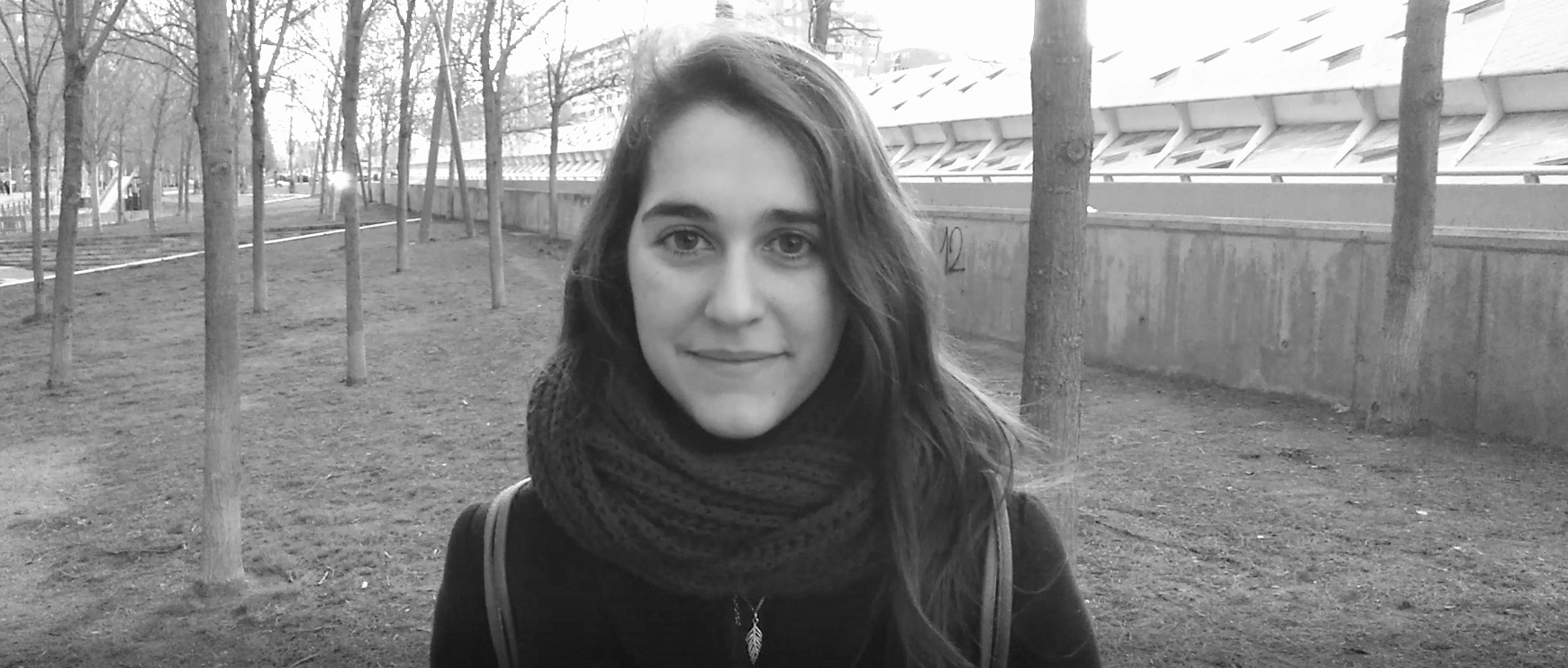Miriam Rivera
Scientific illustrator at Biomiics
Scientific Writer at undergraf
Contributor to Scenio
Since I was a child, I enjoyed reading comics and drawing. After finishing my studies in Human Biology at Pompeu Fabra University and a Master’s of Science in Medical and Environmental Communciation, I decided to combine art and science to create and disseminate comics about biology: Biomiics.
ABOUT ART
How do you get inspiration for your stories?
Often I draw things I learned in my degree’s courses that grabbed my attention. For example, the fact that we’ve got neurons over a meter long. I search for analogies between biological processes and daily funny or even melodramatic situations, so people can learn about science through the cells’, proteins’, or molecules’ little adventures.
Why did you start mixing art and science? Where did the idea come from?
I’ve always loved drawing, especially manga. I discovered the field of science communication thanks to a third-year optional subject during my degree. It was there I found out that science communication was a possible future career. When I was finishing my fourth year, I realized that I’d hardly been able to draw during my degree, even though drawing is my passion, and I wanted to do something to change that.
I wanted to merge the world of biology, which I think is really interesting, with drawing, and it became clear to me that the solution was to communicate science through drawing. Nevertheless, I did not think about comics, but about scientific illustration or graphic design.
When we were doing the Master’s, a group of friends thought about creating a dissemination blog with several formats such as articles and videos, and I decided to do computer graphics in comic form. In the end, the blog never got off the ground because we were very busy. But I’d done my first comic, and since I’d done it I wanted to share it.
What is your approach to infographics and how do you start to draw a complex biological theory? Do you have any tips on how to make complex theories easy to visualize?
First, I decide the topic I want to draw about. Then, I search for information in order to gain a deeper knowledge and comprehension so I can decide the two or three key points. This is important because sometimes we want to explain too many concepts, which is a problem.
Everything else but these three concepts must be avoided to not complicate the message, and that’s what you must base your story and the visual elements on.
Which techniques do you use? Pencil and paper and scan or directly drawing on your computer using software?
Exactly. I use a pencil and a sheet of paper to draw the sketch or the storyboard. Then, I scan and use it as a template to draw the final comic with a vectoral drawing and coloring program.
ABOUT BUSINESS
What is the main achievement you are most proud of?
When I started to study sciences at university, I thought my artistic self would be pushed into the background, so I am very glad to be drawing dissemination comics about science considering it was very difficult for me to get into the freelance world.
You have a Master’s in Scientific Communication. Do you have a secret recipe for explaining research to business leaders?
Not only to business leaders but also to students and the general public. Storytelling has proven to be a great tool for disseminating scientific information. The stories and their characters catch you in an emotional way because they are funny, sad or even indignant, and it is precisely that which makes people remember the information. Using an everyday language is also important.
Technicisms can make difficult to understand information and easy to lose interest in the subject. This is a resource you can use in articles, videos, posts… and comics. What’s more, we remember 65% of what we see and only 10% of what we read. A comic combines a story and attractive visual elements, so it is a potent tool for communicating science, especially now that we have access to social media.
What are your best practices for working with professors and business leaders?
In any case, it is important to know their needs. If it is necessary, when someone asks me for a commission, I usually have a little interview with him or her. This lets me build trust between us and ask for more details about the commission. In this way, I can adapt my quotes to the client. During the process, I establish some phases or checkpoints and ask the client for revisions or comments to advance correctly. It could be said the client and I work as a team.
Books recommended by Miriam
You can read Miriam Rivera’s Golden Rules for Living here.







